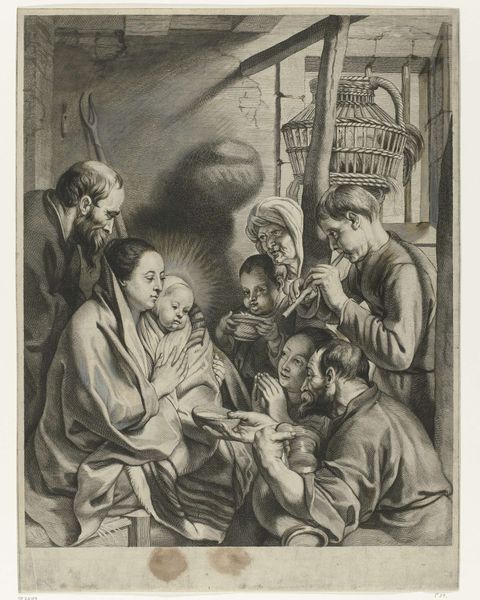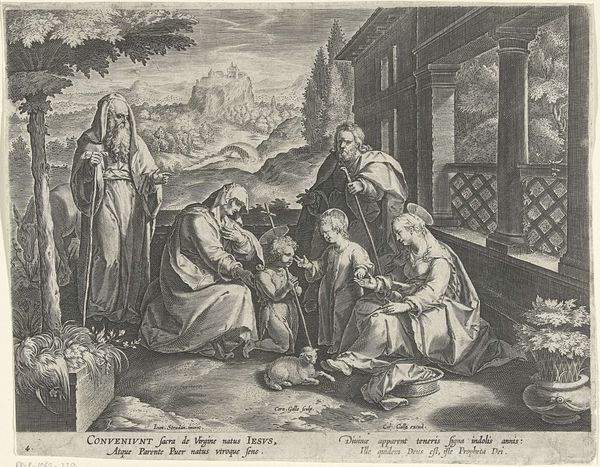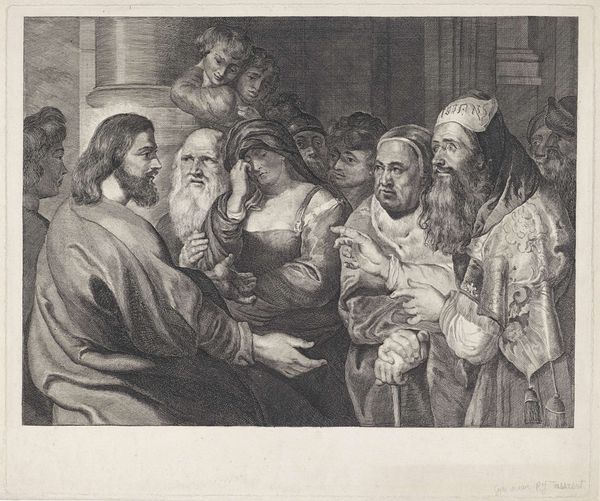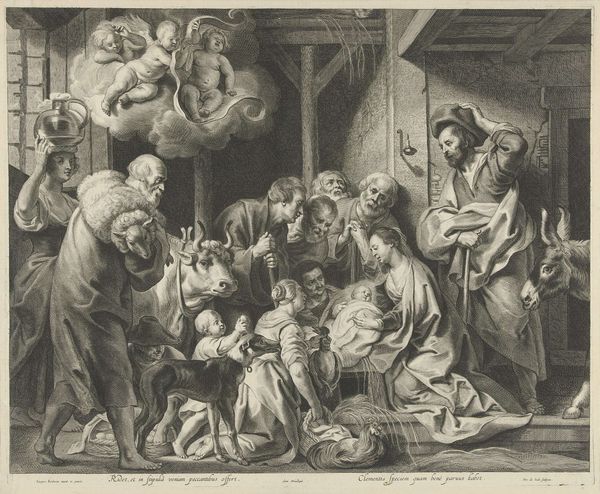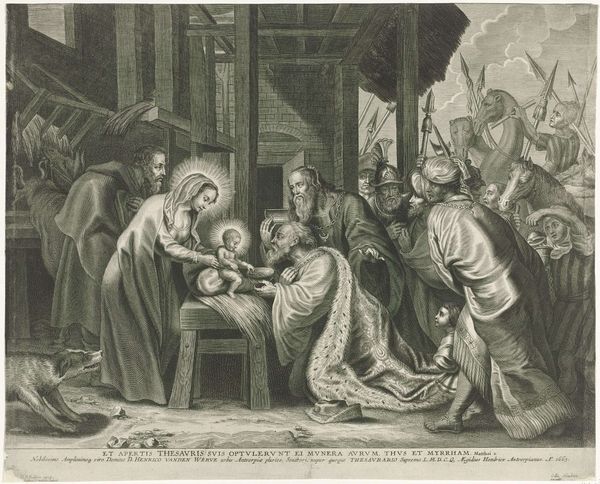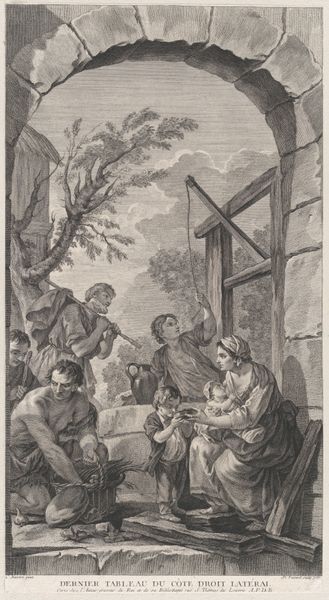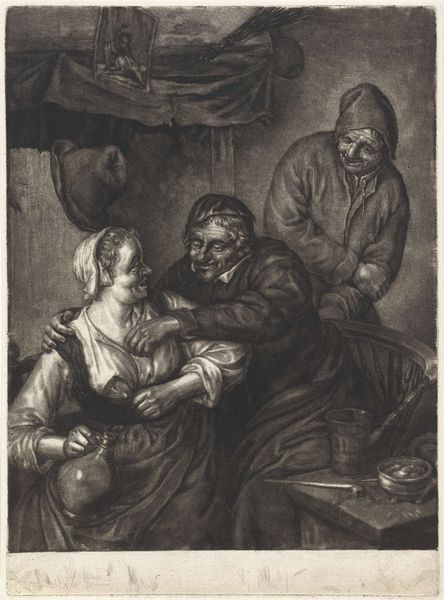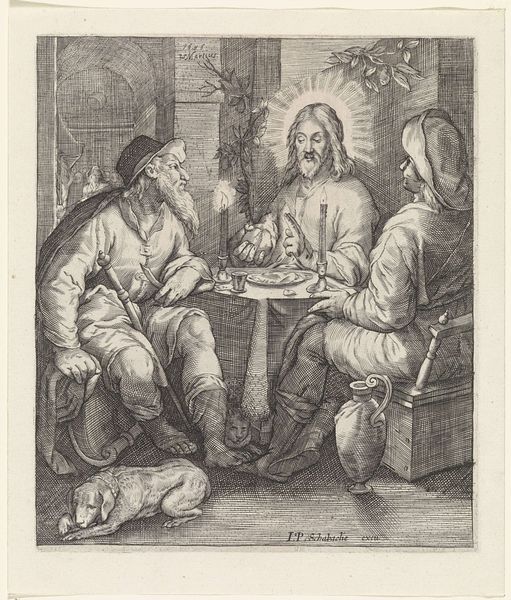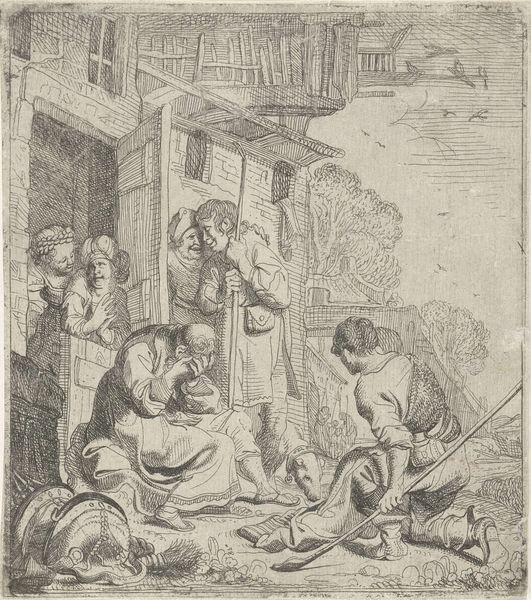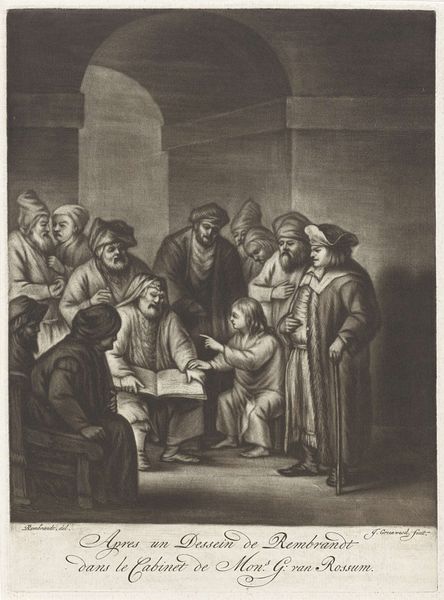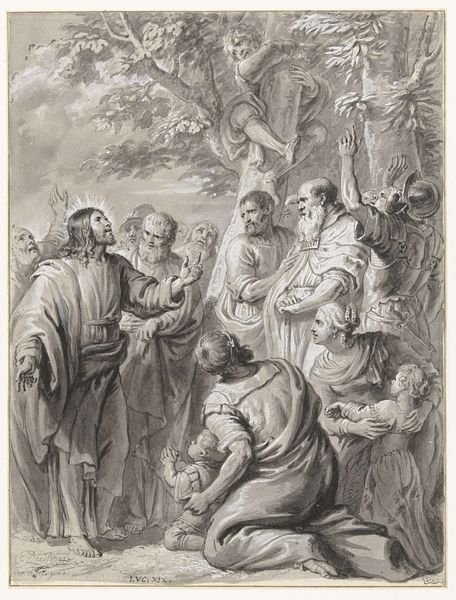
print, engraving
#
baroque
# print
#
figuration
#
history-painting
#
engraving
Dimensions: height 450 mm, width 343 mm
Copyright: Rijks Museum: Open Domain
Editor: So, this is “Adoration of the Shepherds” from the 1630s, by Marinus Robyn van der Goes, currently residing at the Rijksmuseum. It’s an engraving… the light almost seems to emanate from the Christ child himself. It has a strangely intimate, almost humble feel, despite the grandeur of the subject. What’s your take on it? Curator: It whispers stories, doesn’t it? Look how Van der Goes positions the shepherds – a motley crue, perhaps, each etched with the lines of life's simple hardships – drawn not to regal splendor but to a quiet, divine intimacy. That humble setting really sets the Baroque drama. Have you ever felt that pull, to be drawn towards something profound hidden in the mundane? Editor: I think so. There’s something really compelling about that humble aspect you’re describing, compared to other more extravagant depictions. It’s not how I usually imagine baroque art, though. Curator: Baroque, for me, isn’t always about the overwhelming grand gesture; sometimes it’s in those little whispers. Van der Goes's conscious decision to create that raw feel, etched so deliberately, speaks volumes. Those sharp lines, you see, it's like truth and humble reality, made visable, bare almost. I wonder how he achieved that! Editor: True! And those faces are so alive. The etching, as you say, really captures that human…realness. Curator: Exactly. And beyond that the play of light and shadow… It's almost as though the light from the Christ child is not only illuminating the scene, but revealing to us, their inner selves. See it now? Editor: Wow! That is so beautiful and, yes, the meaning definitely unfolds even more! It’s been eye opening to really delve into those subtle nuances, making it a moving experience rather than just an intellectual exercise. Curator: That’s art for me, sparking questions, stirring emotions, like a good poem.
Comments
No comments
Be the first to comment and join the conversation on the ultimate creative platform.
